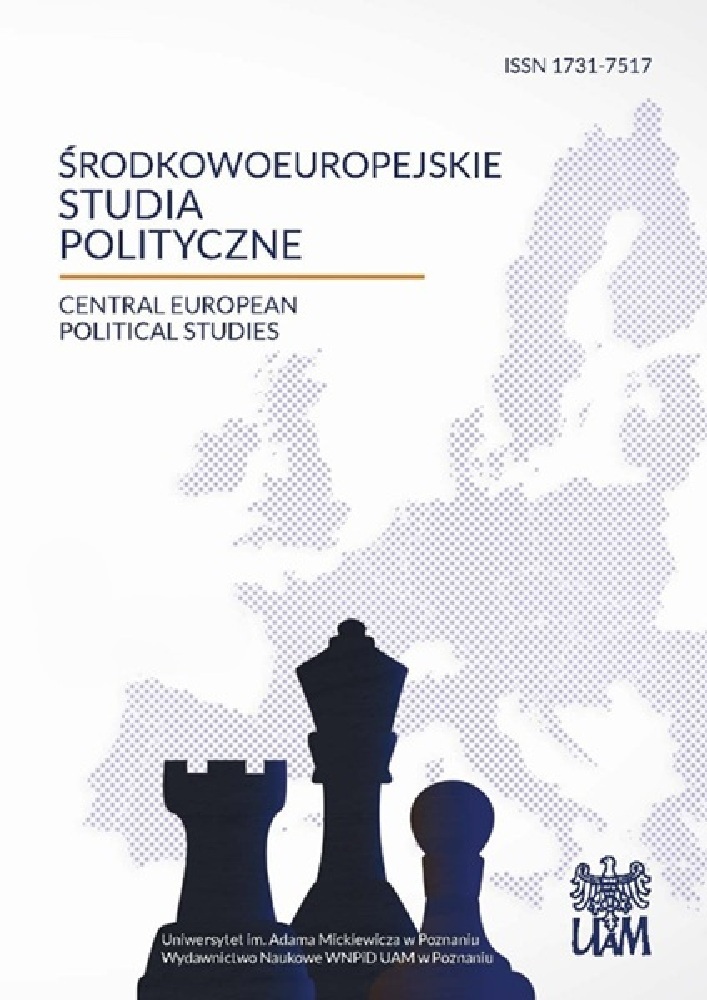Abstrakt
The aim of this publication is to depart from traditional perspectives and research methods in international relations and to take an attempt to analyze the process of modernization of Turkey through the prism of Objects – fez, hat and hijab. The starting point for the deliberations is Bruno Latour’s Object-oriented ontology which’s essence is statement that dichotomy between these what belong to social world and those what is material is completely unfounded. The Objects are indeed the ground and support for fragile relations and processes and create a so-called nonhuman factor, which is subject of interest of posthuman perspective. The author, using Latour’s theory as a theoretical basis, analyzes the role of headgears which evolved from common daily use things into vehcile of state- and nation-building processes.Bibliografia
Aksoy M. (2005), Basörtüsü, türban, batýlýlasma, laiklesmesi laiklik ve örtünme, Kitap Yayýnevi, Ýstanbul.
Anayasa Mahkemesi 5/6/2008 tarih ve E. 2008/16, K. 2008/116 sayýlý kararý, http://www.anayasa.gen.tr/1982ay.htm, 23.07.2013.
Atay F. R. (2004), Çankaya, Pozitif Yayýncýlýk, Ýstanbul.
Aydemir S. S. (1981), Tek Adam, III, Remzi Kitapevi, Ýstanbul.
Bahadýroðlu Y., Sapka inkýlabýnda kaç kisi asýldý?, http://www.timeturk.com/tr/makale/yavuz-bahadiroglu/sapka-inkilabinda-kac-kisi-asildi.html, 18.072013.
Baykal H. (1988), Atatürkçü çaðdaslasma yönünden Türkiye’nin Avrupa topluklarýna tam üyeliði, „Atatürk Arastýrma Merkezi Dergisi”, Cilt IV, sayý 12.
Erden S. (2012), Modern Türkiye’de Siyasi Düsünce Ansiklopedisi III: Modernlesme ve Batýlýlasma, Ýletisim Yayýnlarý, Ankara.
Erdoðan’dan kamuda basörtüsü açýklamasý, http://www.internethaber.com/erdogandan-kamuda-basortusu-aciklamasi-508528h.htm, 23.07.2013.
Gentizon P. (1983), Mustafa Kemal ve uyanan doðu, Bilgi Yayýnevi, Ankara.
Îmece M. (1975), Atatürk’ün sapka devrimde Kastamonu ve Ýnebolu seyahatleri, Türk tarih Kurumu Basýnevi, Ankara.
Kansu M. M. (1966), Erzurum’dan ölümüne kadar Atatürk ile beraber I, Türk Tarih Kurumu Basýnevi, Ankara.
Kołodziejczyk D. (2000), Turcja, Wydawnictwo TRIO, Warszawa.
Konwencja o Ochronie Praw Człowieka i Podstawowych Wolności, Rzym 1950, Dz. U. 1993, Nr 61, poz. 284.
Latour B. (2010), Przedmioty także posiadają sprawczość, w: Teoria wiedzy o przeszłości na tle współczesnej humanistyki, red. E. Domańska, Wydawnictwo Poznańskie, Poznań.
Leyla Sahin v. Turkey (2004), No: 44774/98, http://sim.law.uu.nl/SIM/CaseLaw/hof.nsf/1d4d0dd240bfee7ec12568490035df05/c41c422237274eebc1256ec200325d6b? OpenDocument, 23.07.2013.
Sapka iktisasý hakkýnda kanun No: 671, „Resmî Gazete” 28.11.1925.
Sitembölükbasý, S. (1996), Kültür Devrimleri Yönüyle Atatürk Reformlarý, Türkiye Günlüðü Yaz, sayý: 56.
Türk ceza kanunu No: 5237, „Resmî Gazete” 12.10.2004.
Türkiye Cumhuriyeti anayasasý No: 2709, „Resmî Gazete” 9.11.1982.
Licencja
Copyright
© 2014, Uniwersytet im. Adama Mickiewicza w Poznaniu, Wydawnictwo Naukowe Instytutu Nauk Politycznych i Dziennikarstwa
OPEN ACCESS
